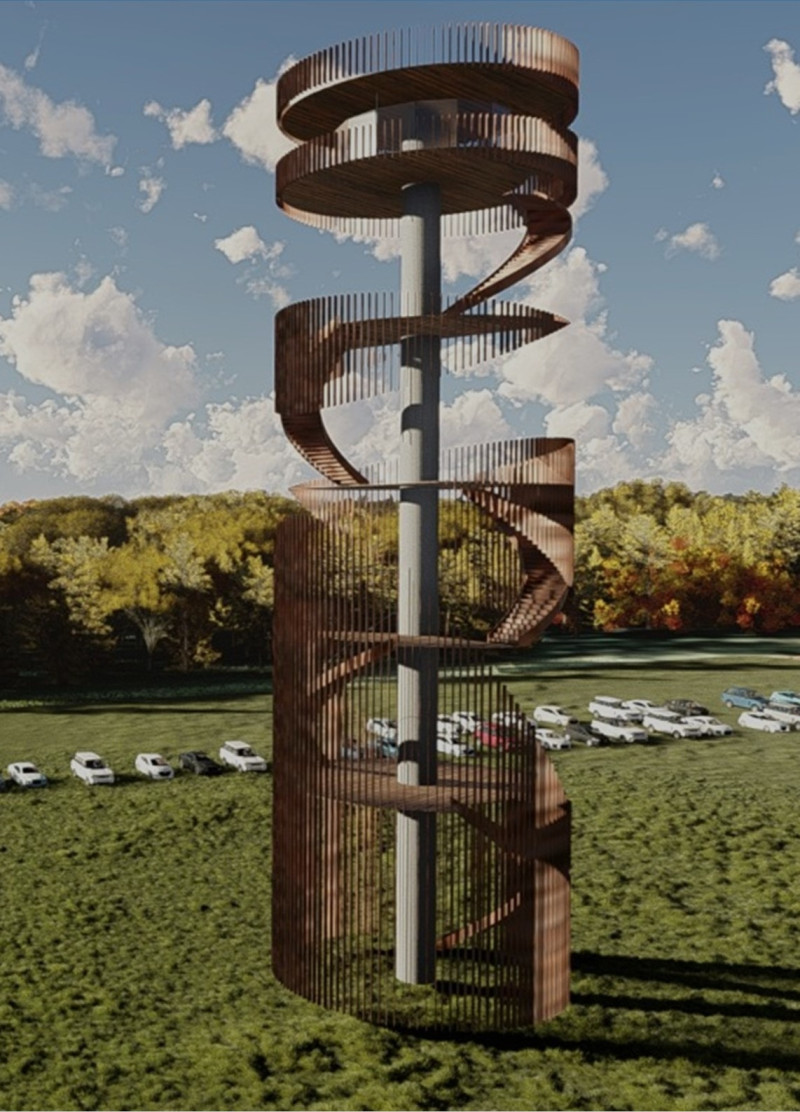5 key facts about this project
The "Internal Nature" project represents a contemporary architectural response to the growing need for a balance between urban living and the natural environment. This design, with a prominent spiraled structure, is conceived to create an immersive experience that encourages interaction with both the built and natural surroundings. At its core, the project aims to integrate human activities with the intrinsic beauty of nature, offering spaces designed for community engagement and personal reflection.
The primary function of this architectural design is to serve as an observatory and retreat, allowing users to ascend through a series of interconnected levels. Each level is engineered to highlight a unique relationship with light, sound, and landscape, fostering a connection between the occupants and the environment. The architectural framework centers on inclusivity and adaptability, accommodating various activities ranging from educational programs to casual gatherings.
The structure features a spiraled design reaching a height of 36 meters, designed to evoke a sense of natural upward movement. This verticality is complemented by carefully considered spatial dynamics that facilitate fluid transitions throughout the building. The architectural sections reveal different floor plans at each level, emphasizing flexibility in usage and movement while promoting a journey through the space.
The integration of diverse materials such as steel, wood, concrete, and glass is a fundamental aspect of the project. Steel is utilized for structural support, providing durability and a contemporary aesthetic. Wood elements are introduced in flooring and cladding, enhancing warmth and creating a tactile connection to nature. Concrete forms the foundation of the project, ensuring stability, while large glass panels maximize natural lighting and offer clear views of the landscape, blurring the lines between indoor and outdoor environments.
What distinguishes this project from others is its emphasis on sensory interaction. The design incorporates voids within the structure to allow light to penetrate at various levels, creating an engaging atmosphere that changes throughout the day. This feature not only enhances user experience but also emphasizes the architectural idea of connecting interior spaces to their natural context.
Moreover, the structure promotes sustainability through innovative environmental strategies. The inclusion of ground-source heat pumps and the thoughtful orientation of glass elements optimize energy efficiency, aligning the project with contemporary sustainability goals.
Overall, the "Internal Nature" project is a significant example of contemporary architecture that prioritizes the harmonious integration of human experience with the natural world. For a deeper understanding of its architectural concepts and practical applications, readers are encouraged to explore the project presentation, including architectural plans, architectural sections, and other architectural designs that reveal the myriad ideas that inform this unique project.






















